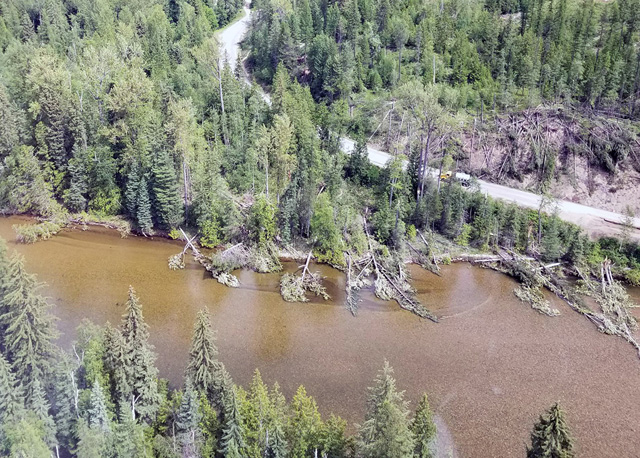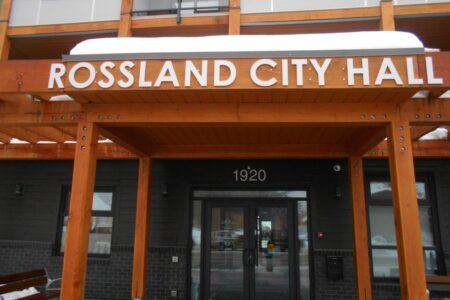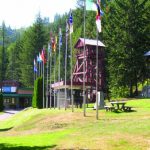RDKB encourages public to watch for debris, changes to waterways after floods
Flood debris and changes to river channels and lakeshores could pose navigational hazards to recreational boaters and others who float or swim in Boundary area waterways this summer, said the Regional District of Kootenay Boundary (RDKB) in a recent media release.
The RDKB said anyone near or on lakes or rivers should be aware that log jams may be larger or in different locations than in the past, hazardous debris may be partly or fully submerged, and beaches, currents and channels are likely to have changed after floods this past spring.
“We want residents and visitors to the region to be aware that as a result of the flood, there is a lot of natural and human-made debris in the Kettle River system including in the West Kettle, Granby and Kettle rivers as well as in Christina Creek and Christina Lake,” said Chris Marsh, Emergency Program Manager for the RDKB.
The Boundary Flood Recovery Team — a multi-agency group led by the RDKB that includes the City of Grand Forks — is now conducting a river hazard assessment by boat and by air to identify hazards along the Kettle River system. Assessors have already identified multiple sites where natural material like logs and branches have piled up. Several sites include a wide range of debris from flooded properties such as portions of buildings, farm equipment and even vehicles. Assessors have also noted riverbank instability, sloughing and entire beach areas now eroded as well as new sand and soil deposits where none previously existed.
Marsh says after the Recovery Team completes its river hazard assessment in the coming week, professional hydrologists, engineers and experts from the Province of BC will work with the RDKB to develop a plan for debris removal in critical areas and to carry out general clean-up.
“Being out on the water is a big part of summer in the Boundary region. Residents and visitors float down rivers, fish, and boat on Christina Lake, and should continue to enjoy those activities; however, it’s important that everyone understands how waterways have changed after flooding. Where you thought it was safe to float or boat last summer may now require more vigilance so you don’t get into trouble.”
Natural hazards in the river system:
- Logjams
- Sweepers (trees hanging in or close to the water)
- Large trees and woody debris hung up on structures including bridges
Human-made hazards in the river system:
- Barbed wire and chain link fencing
- Fence poles
- Non-energized power and phone lines
- Utility poles
- Farm and construction equipment, vehicles
- Barns, sheds and parts of homes
- Irrigation pipes and other farm equipment
- All manner of household items
For information about boating and swimming safely, visit redcross.ca, the Lifesaving Society or review this list of water-safety best practices compiled by the Province of BC:
- All recreational boaters, including paddlers, should wear a properly fitted personal floatation device (PFD). Children, non-swimmers and weak swimmers should wear a PFD anytime they are in or near the water.
- Visitors to B.C. should understand the possible dangers in or near B.C.’s lakes and rivers. These include sudden drop-offs into deep water; unexpected, underwater obstacles; and unstable or slippery rock edges above cliffs and waterfalls. Waters in B.C. are also frequently much colder than in other countries or provinces. If you are hosting someone from out of town, be sure to warn them of these potential hazards.
- Avoid consuming alcohol when swimming, boating or performing any water-based activity. Impairment greatly increases the chances of an accidental drowning.
- Be aware of the water conditions where you are planning your activities. Check the weather forecast before heading out, and also do a visual inspection of the area. Do not head down a river without being aware of the water conditions further downstream. If there are warning signs posted, obey them.
- Never dive into unknown waters. Unexpectedly shallow water, or hidden obstacles underwater, can easily prove fatal. Diving from cliffs or from other great heights is exceptionally risky.
- Never swim alone. Always have a buddy and keep an eye out for each other.
























